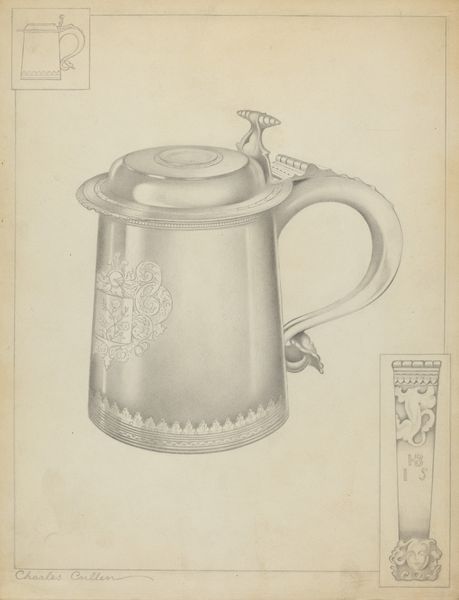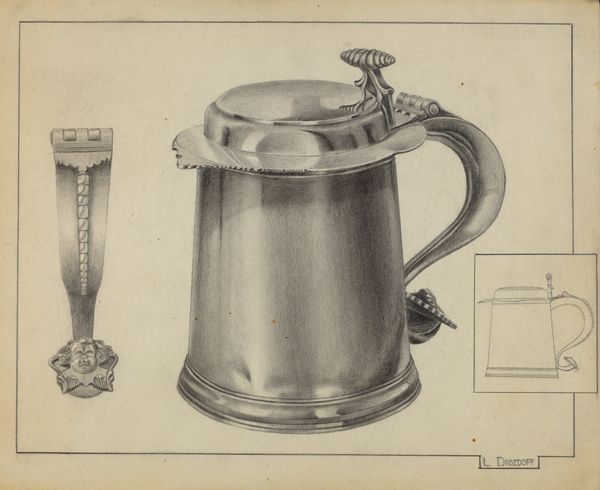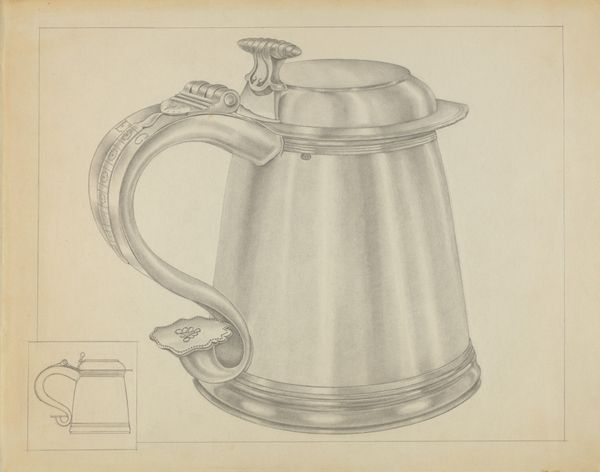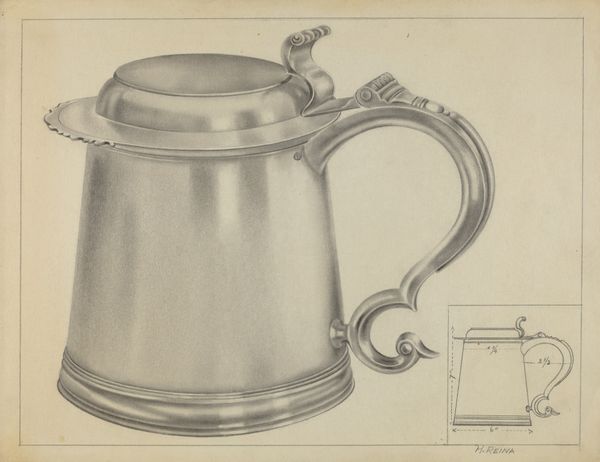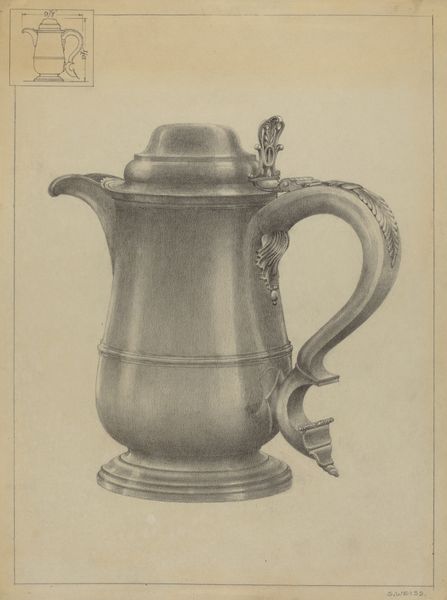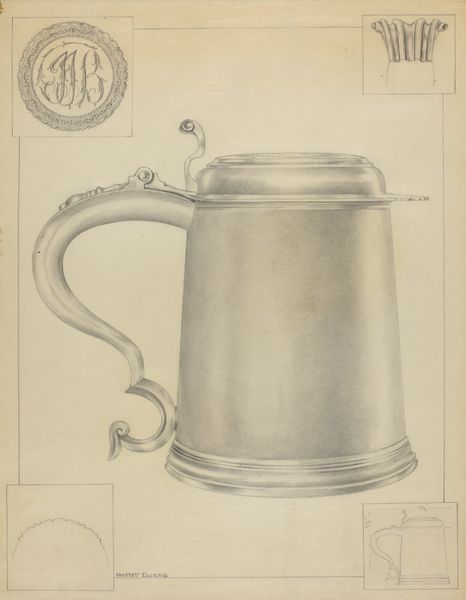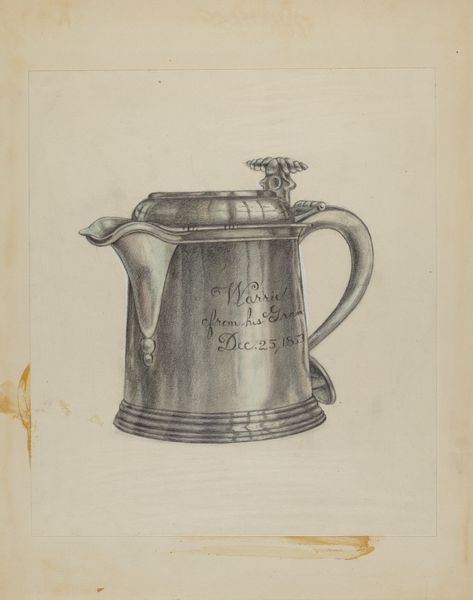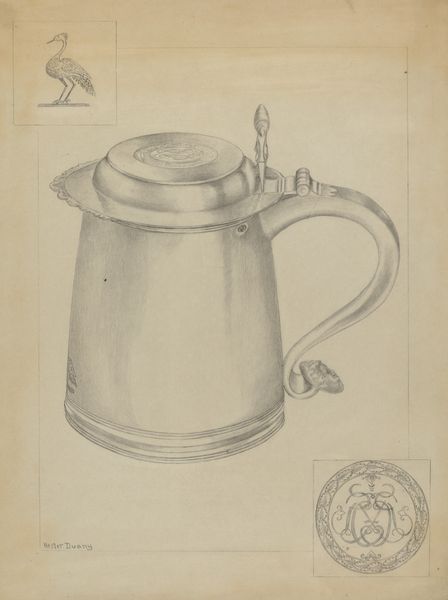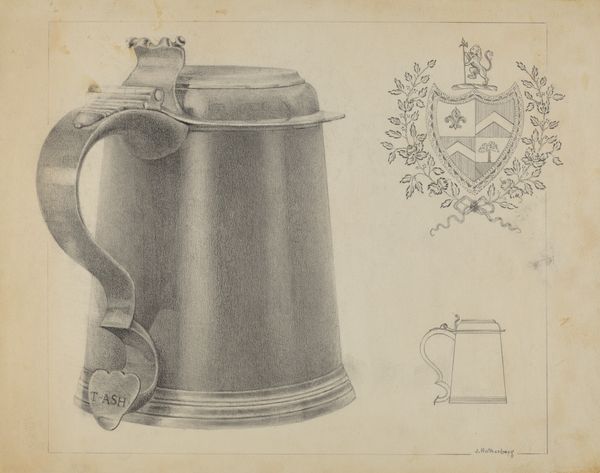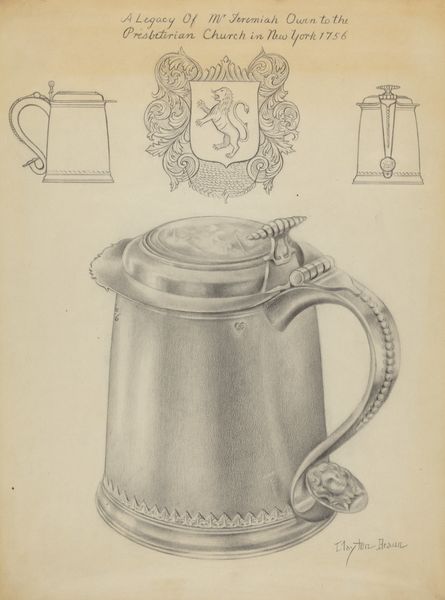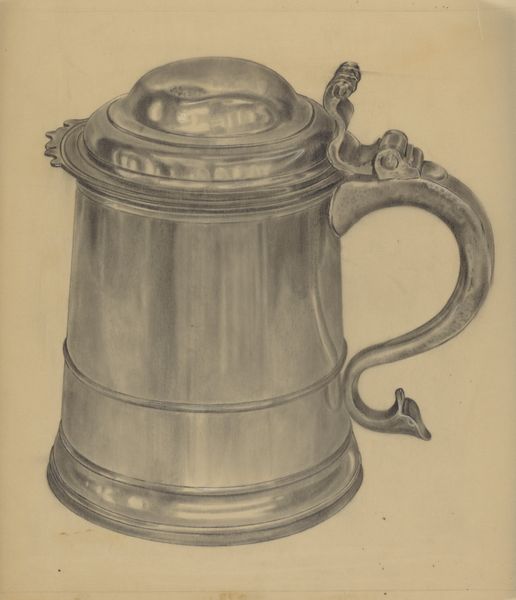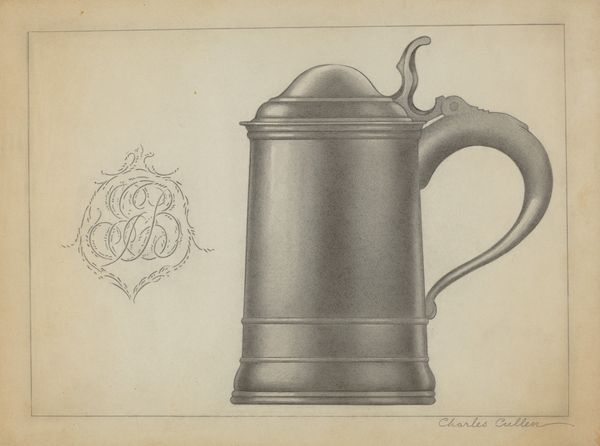
drawing, pencil
#
drawing
#
pencil
Dimensions: overall: 22.8 x 28.9 cm (9 x 11 3/8 in.) Original IAD Object: 7" high
Copyright: National Gallery of Art: CC0 1.0
Curator: Here we have Karl Joubert’s "Silver Tankard," a pencil drawing created around 1936. The subject matter seems quite straightforward. Editor: Yet immediately, its stark realism strikes me. The muted grey palette and smooth gradient create an almost photographic precision. There is an overwhelming stillness in the presentation, though I'm also picking up faint geometric structures which I presume gives the drawing stability? Curator: The technical skill is certainly evident. Joubert masterfully renders the play of light on the metallic surface, and its flawless precision underscores the object’s own function: that of refined functionality, a well-crafted item embodying utility, rendered through pencil. I imagine its function, or intent is to record rather than critique a particular societal object of utility. Editor: Function is secondary to meaning, wouldn’t you agree? Though the subject might simply appear to be a household item rendered on paper, this form signifies wealth and social status, at least in its historical contexts. Wouldn’t a tankard rendered in silver signify a specific social role? Curator: Undeniably, the rendering signifies social strata through detail. And as the pencil traverses and contours the surface of the tankard, note the detail on the handle. Joubert's detailed rendering adds weight. But notice how the form lacks contextual grounding – no background or surrounding objects appear, heightening the visual analysis of the piece itself, stripping social signification, in some ways. Editor: Still, let’s not divorce the image completely from the context. Drinking vessels, especially in the early part of the 20th century, often took on roles far exceeding functionality. Craftsmanship and aesthetic value reflected aspirations tied into personal status. Perhaps this speaks to wider societal concerns of wealth during the inter-war period? The object and its detailed depiction would reinforce the owners position. Curator: Very possible. And while the artwork opens up interpretations through broader social perspectives, its success lies, I feel, in the sheer quality of depiction and execution through value gradations to mimic depth and volume, thus drawing the viewer back towards itself. The lack of ornamentation and context places greater emphasis on these subtle achievements. Editor: And, thinking about this detailed drawing today, it helps me consider class divides while appreciating how objects acquire cultural meaning. This, after all, is how museums themselves function, aren't they? By highlighting select objects for scrutiny. Curator: Indeed. In short, there’s always more than meets the eye. Even with seemingly straightforward subjects, there is still complexity, meaning and subtext through line, tone and execution.
Comments
No comments
Be the first to comment and join the conversation on the ultimate creative platform.
